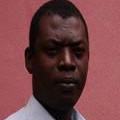International Journal of Information Technology and Computer Science (IJITCS)
IJITCS Vol. 10, No. 8, 8 Aug. 2018
Cover page and Table of Contents: PDF (size: 485KB)
Comparative Descriptive Analysis of Breast Cancer Tissues Using K-means and Self Organizing Map
Full Text (PDF, 485KB), PP.46-55
Views: 0 Downloads: 0
Author(s)
Index Terms
Clustering, breast cancer, k-means, self –features organizing map, SOM, electrical impedance imaging
Abstract
Data mining is a descriptive and predictive data analytical technique that discovers meaningful and useful knowledge from dataset. Clustering is one of the descriptive analytic techniques of data mining that uses latent statistical information that exists among dataset to group them into meaningful and or useful groups. In clinical decision making, information from medical tests coupled with patients’ medical history is used to make recommendations, and predictions. However, these voluminous medical datasets analysis is always dependent of individual analyzer that might have in one way or the other introduced human error. In other to solve this problem, many automated analyses have been proposed by researchers using various machine learning techniques and various forms of dataset. In this paper, dataset from electrical impedance imaging of breast tissues are clustered using two unsupervised algorithms (k-means and self-organizing map). Result of the performances of these machine learning algorithms as implemented with R i368 version 3.4.2 shows a slight outperformance of K-means in terms of classification accuracy over self-organizing map for the considered dataset.
Cite This Paper
Alaba T. Owoseni, Olatubosun Olabode, Kolawole G. Akintola, "Comparative Descriptive Analysis of Breast Cancer Tissues Using K-means and Self-Organizing Map", International Journal of Information Technology and Computer Science(IJITCS), Vol.10, No.8, pp.46-55, 2018. DOI:10.5815/ijitcs.2018.08.07
Reference
[1]Fatehia B. Garma and Mawia A. H. Classification of breast tissue as normal or abnormal based on texture analysis of digital mammogram, Journal of Medical Imaging and Health Informatics, 2014, 4:1–7.
[2]Saidin N., Sakim H. A. M., Ngah U. K., and Shuaib I. L. segmentation of breast regions in mammogram based on density: a review, International Journal of Computer Science Issues (IJCSI), 2012, 9(4), No 2.
[3]Ganesan K., Acharya U. R., Chua C. K., Min L. C., Abraham K. T., and Ng K.H. Computer-aided breast cancer detection using mammograms: A review, IEEE Reviews in Biomedical Engineering, 2013, 6:77-98.
[4]Leonardo de O. Martins, Alcione M. dos Santos, Arist´ofanes C. Silva and Anselmo C. Paiva. Classification of normal, benign and malignant tissues using co-occurrence matrix and Bayesian neural network in mammographic images, In Proceedings of the Ninth Brazilian Symposium on Neural Networks (SBRN'06), 2006.
[5]UCI Machine Learning Repository, [http://archive.ics.uci.edu/ml/datasets/Breast+Tissue], Accessed 7 January, 2018.
[6]Jossinet J. Variability of impedivity in normal and pathological breast tissue, Med. & Biol. Eng. & Comput, 1996, 34 (5): 346-350.
[7]Silva J. E., Marques de Sá J. P., Jossinet, J. Classification of breast tissue by electrical impedance spectroscopy, Med & Bio Eng & Computing, 2000, 38:26-30.
[8]Chan H. P., Wei D., Helvie M. A., Sahiner B., Adler D. D., Goodsitt M. M.,and Petrick N. Computer-aided classification of mammographic masses and linear discriminant analysis in texture feature space. Phys. Med. Biol., 1995, 40(5): 857-876.
[9]Wang T. C. and Karayiannis N. B. Detection of Micro calcifications in Digital Mammograms Using Wavelets. IEEE Trans on medical imaging, University of Houston, Houston, USA, 1998, 17:498–509.
[10]Garma F. B., Almona M., Bakry M. M., Mohamed M. E., and Osman A. Detection of breast cancer cells by using texture analysis, Journal of Clinical Engineering, 2014, 79-83
[11]Sheshadri H. S. and Kandaswamy A. Breast tissue classification using statistical feature extraction of mammograms. J. Medical Imaging and Information Sciences (Japan), 2006, 23(3):105-107.
[12]Zhang P., Verma B., and Kumar K. Neural versus statistical classifier in conjunction with genetic algorithm-based feature selection. Pattern Recognition Letters, 2005, 26:909–919.
[13]Christoyianni A. K., Dermatas E., and Kokkinakis G. Computer aided diagnosis of breast cancer in digitized mammograms, Computerized Medical Imaging and Graphics, 2002, 26: 309–319.
[14]Nithya R., Santhi B. Computer-aided diagnosis system for mammogram density measure and classification, Biomedical Research, 2017, 28 (6):2427-2431.
[15]Petroudi S., Kadir T., and Brady M. Automatic classification of mammographic parenchymal patterns: a statistical approach, IEEE Conf EMBS, 2003.


